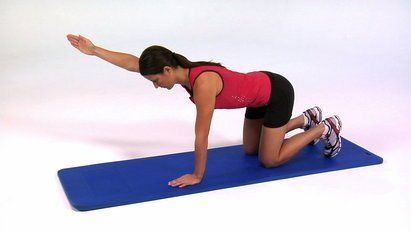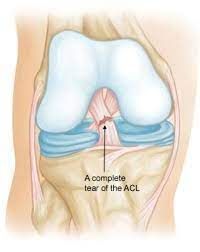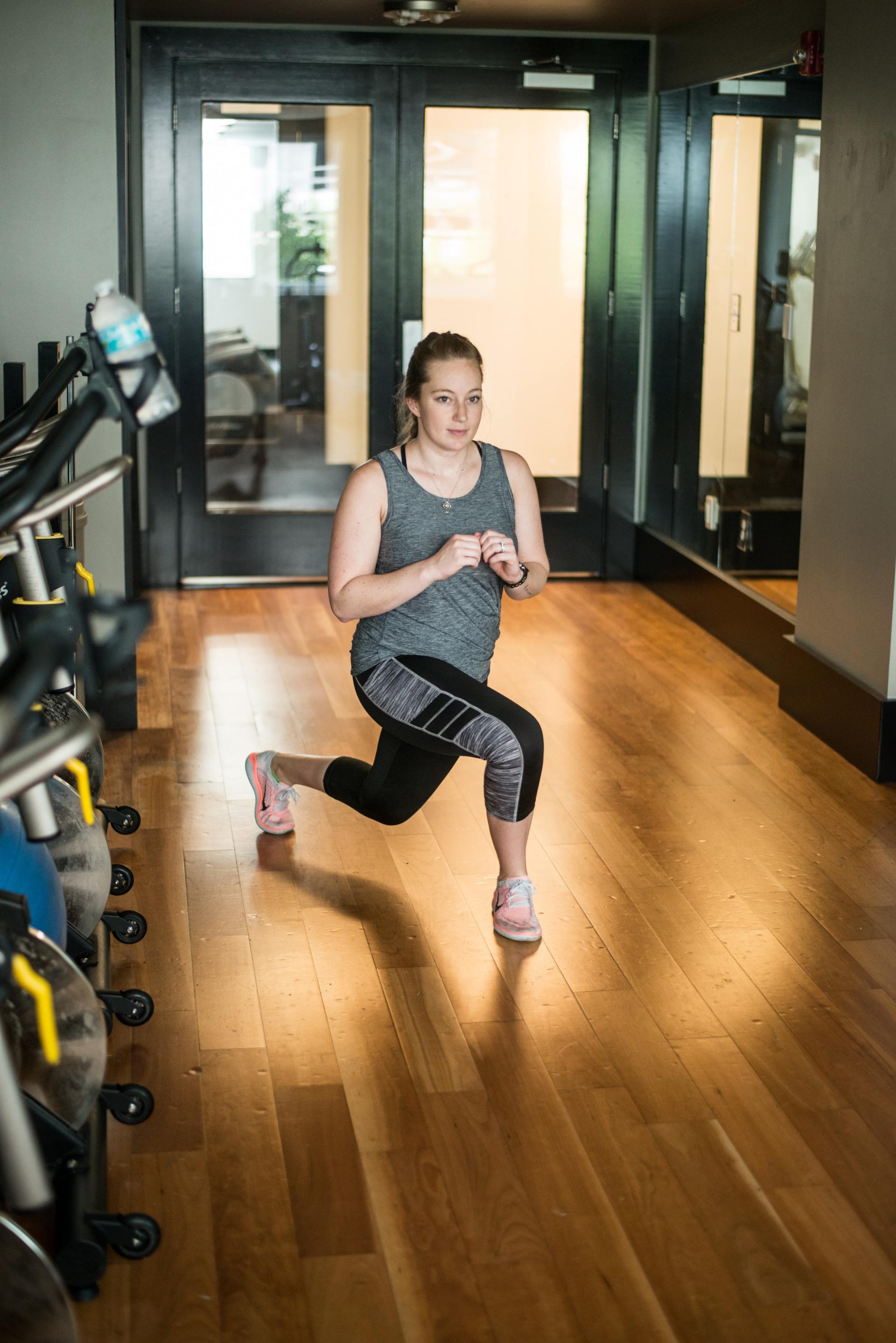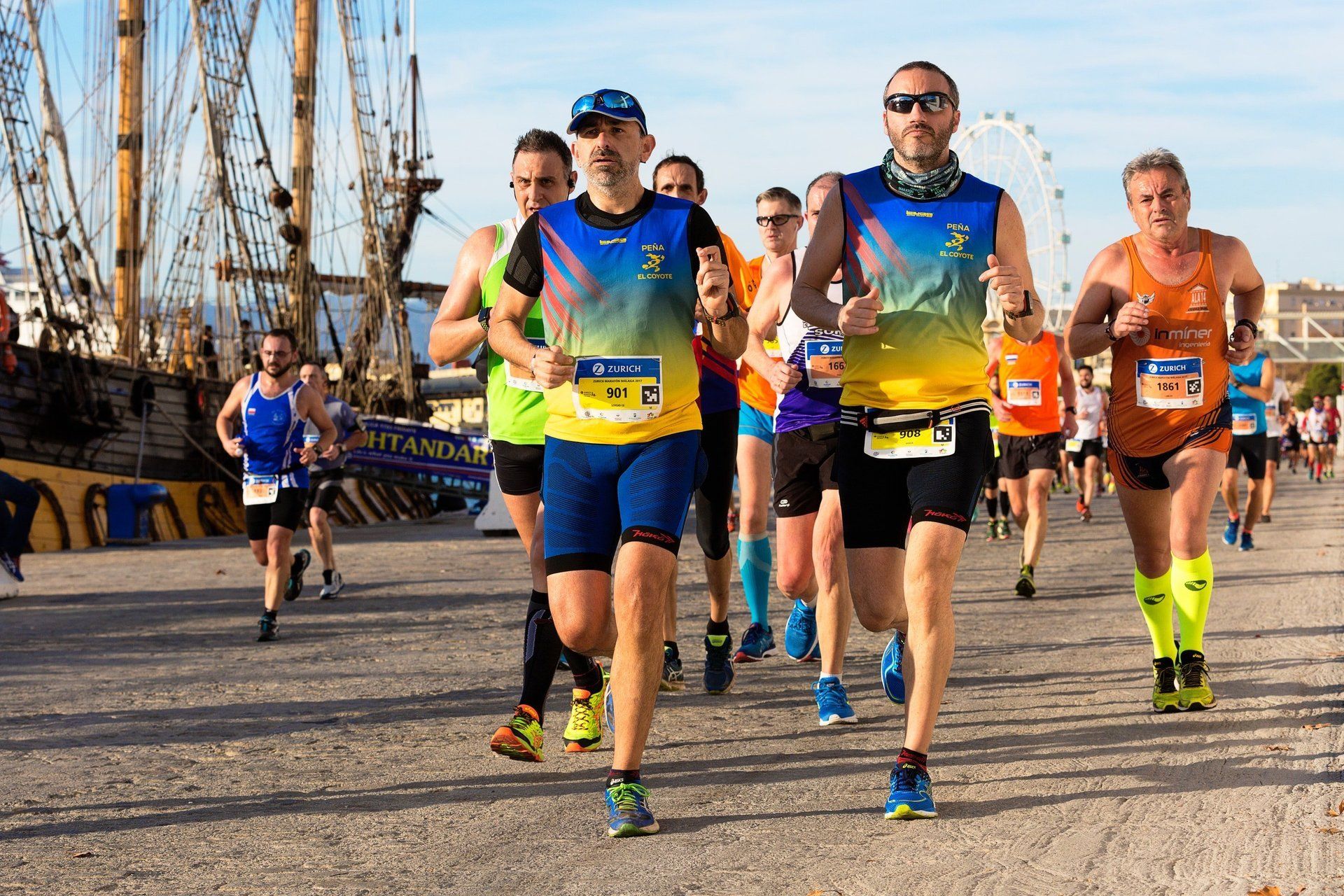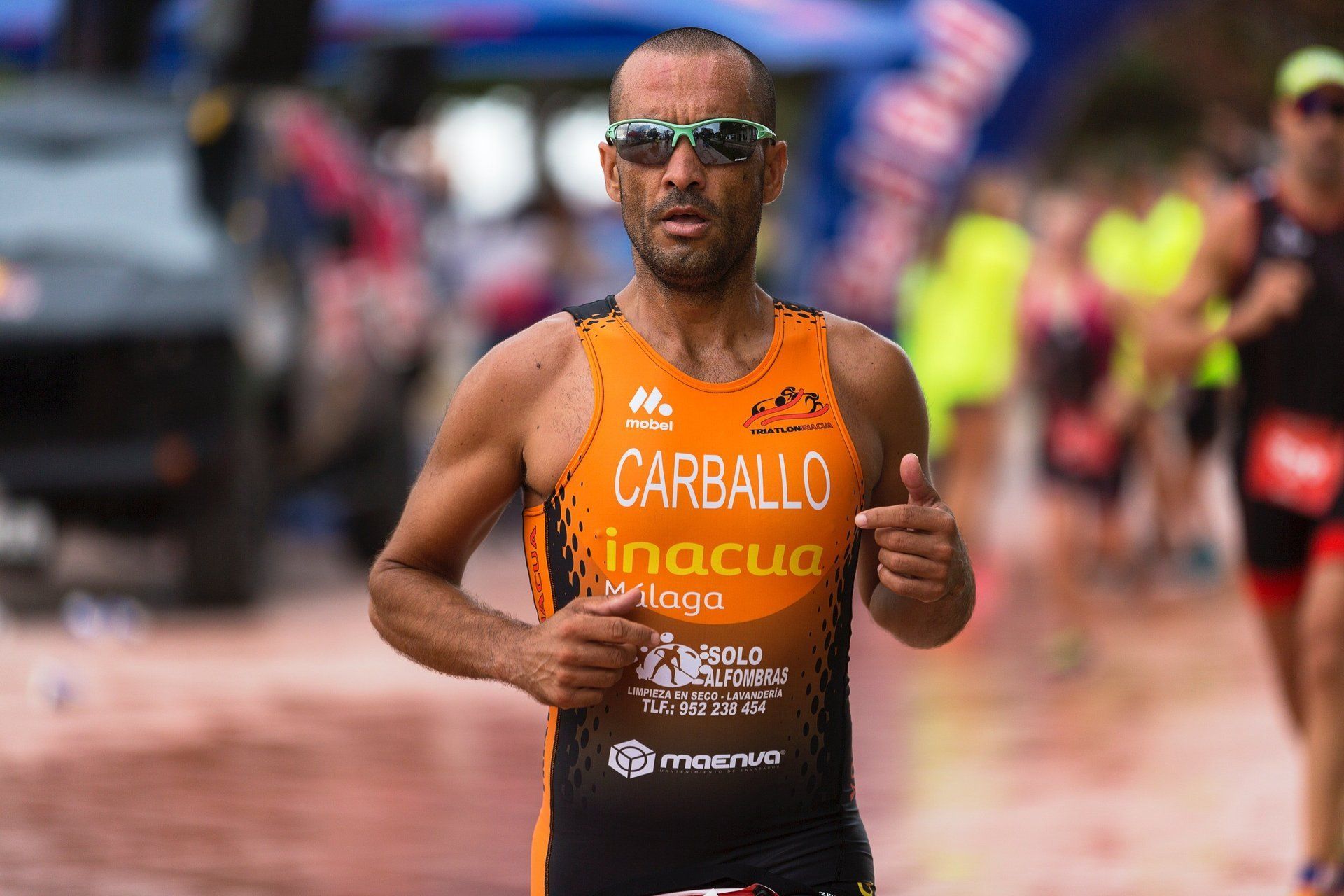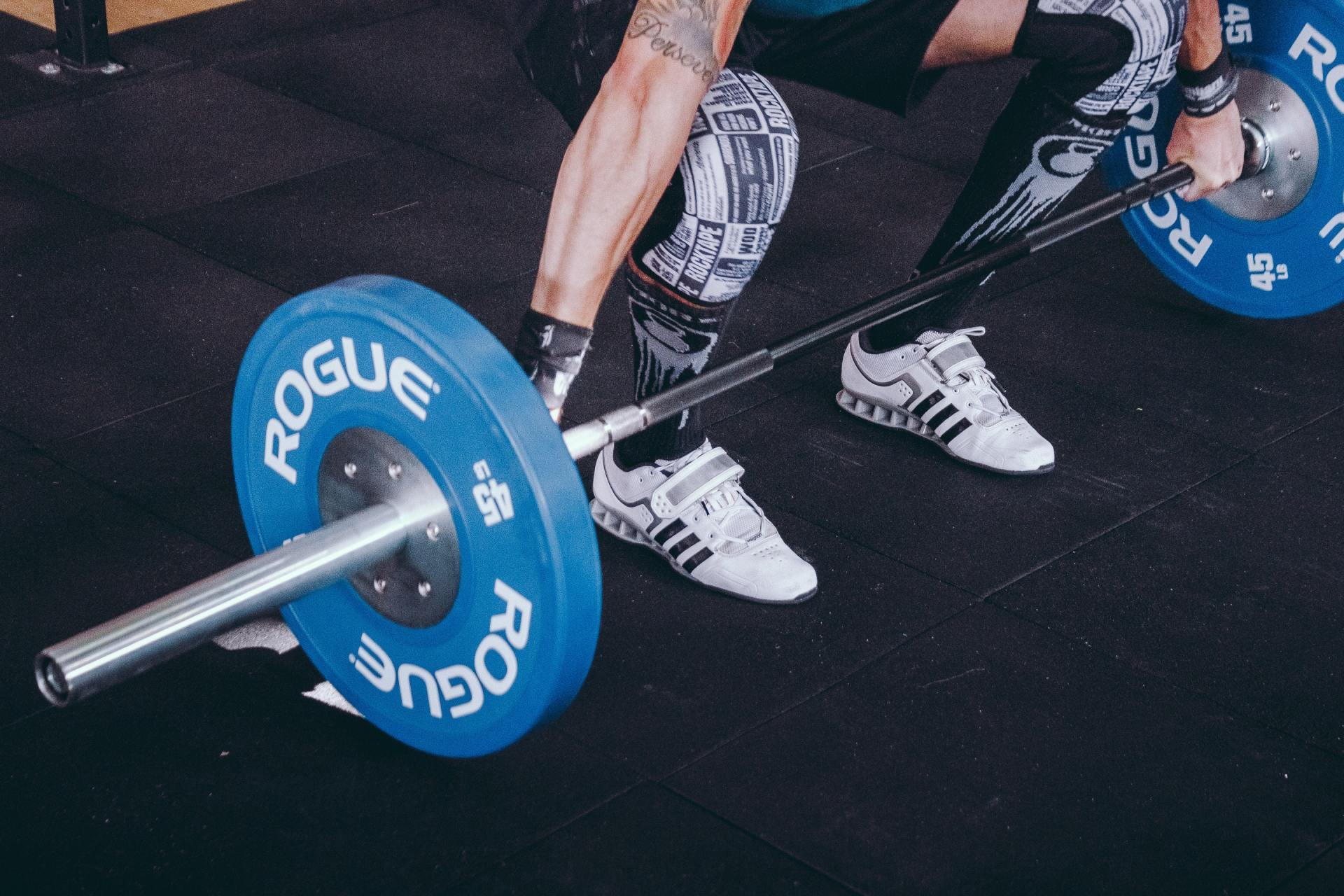
Apache Brave Sports Therapy
Mobile Sports Massage
Personal Training
Coventry | Warwickshire
Inactivity and the Links to Cancer
Review of Physical (In)activity and Cancer
Cancers are
classified as a family of related diseases that result from uncontrolled growth
and spread of abnormal cells5 that usually become a tumor. The most
common causes of cancer related deaths in the United Kingdom are seen in Figure 1 below.The evidence linking
low levels of physical activity and an increased potential for development of
cancer is growing. More studies are focused on determining if physical
activity can be used as a preventative measure in the incidence of cancer.
Physical Activity and Breast Cancer
Thune et al (1997) found in their study of over 25,000 participants that an increased amount of physical activity during leisure time and work is associated with a decreased risk of breast cancer. The study evaluated the influence of physical activity, both at work and leisure time, in a large sample (n =25, 624, age 20 to 54) of pre-menopausal and post-menopausal women. Further support to the notion of increased physical activity and lower incidence of breast cancer is supported in studies of former college athletes10,11 and general population (Friedenreich et.al.,1995). One hypothesis for the lower incidence of breast cancer in former athletes relates to the later age of menarche usually found in this population (Frisch et al. 1985). Both early menarche and late menopause would be expected because they (the athletic population) would generally carry less body fat.
However, there are a number of studies that have found no evidence to suggest physical activity can help to reduce the incidence of breast cancer in a population. One such study looked at a large sample (n = 10118) of female teachers in Finland (Pukkala, et.al.,1993) and compared the incidence of cancers in a group of physically active teachers (PE teachers) with a less active group (language teachers). Another study showed that the risk for male and female breast cancer became elevated after socio-economic status was taken into consideration (Dosemeci et al 1993). A suggestion may be that lower socio-economic groups may not have sufficient physical activity and consume a “less healthy” diet (i.e., with higher fat intake), thus potentially increasing the risk of cancer. This article on the BBC website provides an interesting discussion on possible lifestyle links to breast cancer: http://news.bbc.co.uk/1/hi/health/1633831.stm.
A review by Van Gaal and Mertens, cited in
Kopelman and Stock (1998), shows conflicting evidence in relation to breast
cancer and fat distribution. Some studies have reported a correlation between
breast cancer risk and fat distribution (Van Gaal et al. (1998). Other studies
have not come to the same conclusions.
The connection between physical activity and body fat distribution is that physical activity can help control body weight.
Physical Activity and Colon Cancer
Much of the research conducted on cancer and physical activity combine the data for colon and rectal cancers. Friendreich and Orenstein (2002) state that the evidence for a link between physical inactivity and the appearance of colon cancer is strong and consistent. Giovanucci et al (1995) found that physical activity was inversely related with colon cancer, after adjustments for age and other factors.
Waist to hip ratio and waist circumference were also indicative of risk factors for colon cancer. Therefore, it could be hypothesized that increased abdominal adiposity is associated with an elevated risk. This can be viewed as a significant finding as the study examined a large group of participants (n = 51529). However, because the sample group consisted of health professionals, it is could be argued that this is not representative of the general population. Dosemeci et al. (1993) suggested that the lower the socio-economic status, the higher the incidence of colon cancer. Additionally cancers of the colon and prostate showed an increased risk with males participating in lower levels of activity. Slattery et al. (1997) lend support to the notion that low levels of physical activity and high energy intake (therefore, a potential increase in body mass) are associated with colon cancer. The same study found that a high level of energy intake that was balanced by a high level of physical revealed a non-significant risk of colon cancer.
Another study (Paffenbarger et al. 1987) highlighted varying populations, (i.e., dockworkers, college alumni etc.) and reviewed them for the incidence of cancer in relation to the levels of physical activity involved during both leisure time and occupational time. The conclusions suggested that the more active men have an increased likelihood to die from pancreatic and colorectal cancers. No differences by activity for the incident of prostate cancer were noted. However, Friedenreich (2001) suggests that the evidence for correlation between physical activity and colon/colorectal cancer is convincing. A significant number of studies have clearly demonstrated a large reduction in risk of cancer in the physically active. (Thun et al. 1992: Paffenbarger et al. 1987: Lee et al.1994)
Batty and Thune (2000) suggest plausible mechanisms of protection of physical activity on insulin amongst others, which positively influence cells in the colon. Additionally, they suggest that physical activity improves the transit time of the bowel, thus reducing the contact time with carcinogens in faecal matter. The authors report the appearance of an increased risk of colon cancer associated with sedentary or light physical activity. This supports the statement that increased physical activity appears to aid in the reduction of risk for colon and rectal cancers.Other Cancer Sites
An examination of data from the National Health and
Nutrition Examination Survey (NHAMES 1) by Albanes et al. (1989) showed a
nearly two-fold risk increase in the inactive group for all cancer sites. The
study used 5,138 men and 7,407 females, age 25 to 74 years of age. The most
common sites of cancer identified in the follow up period of the study for
males were lung, prostate and colorectal. The common sites in females were
identified as breast and colorectal.
Exercise has an important role in cancer prevention by helping to maintain a
healthy body weight especially when combined with a healthy diet. It may also
have a more direct effect on cancer risk. Exercise is thought to influence the
levels of hormones such as estrogen and insulin in the body and may have a
particular effect in hormone-related cancers.
There is also evidence that physical activity significantly reduces the risk of
bowel cancer and may help lower the risk of breast, prostate, lung and
endometrial cancer. Cancer Research UK
suggests moderate exercise five days per week for around thirty minutes.
The protective mechanism suggested by Thune and Furberg (2001) is that physical
activity improves ventilation and perfusion. Therefore, concentration of
carcinogenic agents in the airways will be reduced as will the duration of
agent/airway interaction. Albanes et al. (1989) supports a protective effect
from leisure time activity and is supported by Lee et al. (1999) and Severson
et al (1989). Due to the relatively small number of supportive studies on lung
cancer and physical activity, the current results must be treated with caution,
particularly when considering the participants of the studies. The majority of
participants in this area have been male, so perhaps more females need to be recruited
to establish a male/female risk factor. There is little mention of the
ethnicity of the participants.
Practical Considerations
Exercise prescription as part of the disease management for cancer patients must be highly individualized because of the extreme variability of the effects of cancer and treatment regimens on functional capacity. Furthermore, other concurrent or prior health problems should be anticipated and taken into account in developing any exercise prescription. Although it is acknowledged that the recommendations for exercise should be modified for specific patients, it is generally accepted to recommend 30 minutes of continuous exercise such as brisk walking or swimming three to four times per week. Attention should be given to safety measures and general health maintenance. These guidelines are the general exercise recommendations outlined by American College of Sports Medicine (2006) and more recently updated (Haskell, et al. 2007). Furthermore, Cancer UK published a good healthy living leaflet for general health ( http://info.cancerresearchuk.org/healthyliving/tentoptips/ ).
Walking and cycling are recommended as safe and generally well tolerated exercise modes involving large muscle groups. De-conditioned patients should begin with daily sessions of shorter duration and lower intensity. In general, moderate intensity exercise (50-75% HR reserve, RPE 11-14) sessions of between 20 and 30 minutes duration are recommended, with modifications as needed, including an interval approach to cardiovascular exercise, consisting of short exercise bouts (three to five minutes) followed by rest periods.Conclusion
While there is a link between physical activity and certain cancers, there
still seems to be a gap in the knowledge of why physical activity seems to have
a preventative effect on certain cancers. Some studies offer suggestions, but
there is no clear reason of the “why” increased physical activity may help and
“how” it may help.
There is not sufficient conclusive evidence to say that an increased physical activity level has a preventative measure against the development of all site cancers. However, as discussed above, there is strong evidence for the decreased risk of certain cancers.
Practically speaking it is difficult to make general recommendations regarding frequency, intensity, and duration. No one individual or demographic will be the same. The key is to remember this and use gradual progressive exercise programming.References:
- ACSM (2006) Guideline for Exercise Testing and Prescription. Chapter 7 General Principles of Exercise Prescription. Seventh edition. Lippincott, Williams and Wilkins
- Albanes, D. Blair, A. and Taylor, P.R (1989) Physical Activity and Risk of Cancer in the NHAMES 1 Population. American Journal of Public Health. Vol 79, No 6 pp744 – 750.
- Brownson, R.C. Chang, J.C. Davis, J.R. and Smith, C.A (1991) Physical Activity on the job and cancer in Missouri: In Friedenreich, C.M (2001) Physical Activity and Cancer Prevention: From Observational to Intervention Research. Cancer Epidemiology, Biomarkers & Prevention. Vol 10, pp287 – 301.
- Crespo, C.J. Exercise and the Prevention of Chronic Disabling Illness. In Frontera, W.R, Dawson, D.M and Slovik, D.M (1999) Exercise in Rehabilitation Medicine. Human Kinetics. Champaign Ill.pp 151 – 172
- Dishman, R.K. Washburn, R.A. and Heath, G.W (2004) Physical Activity Epidemiology. Human Kinetics. Champaign Ill.
- Dosemeci, M. Hayes, R.B. Vetter, R. Hoover, R.N. Tucker, M. Engin, K. Unsal, M. and Blair, A. (1993) Occupational physical activity, socio-economic status, and risks of 15 cancer sites in Turkey. Cancer Causes and Control. Vol 4, pp313 – 321.
- Friedenreich, C.M (2001) Physical Activity and Cancer Prevention: From Observational to Intervention Research. Cancer Epidemiology, Biomarkers & Prevention. Vol 10, pp287 – 301.
- Friedenreich, C.M and Orenstein, M.R (2002) Physical Activity and Cancer Prevention: Etiological Evidence and Biological Mechanisms. Journal of Nutrition, 132: 3456S – 3464S.
- Friedenreich, C.M and Rohan, T.E (1995) Physical Activity and risk of breast cancer. European Journal of Cancer Prevention. 4, pp145-151
- Frisch, R.E. Wyshak, G. Albright, N.L. Albright, T.E. Schiff, I. Witschi, J. and Marguglio, M (1985) Lower prevalence of breast cancer and cancers of the reproductive system among former college athletes compared to non- athletes. British Journal of Cancer. 52, pp885-891.
- Frisch, R.E. Wyshak, G. Albright, N.L. Albright, T.E. Schiff, I. Witschi, J. and Marguglio, M (1987) Lower lifetime occurrence of breast cancer and cancers of the reproductive system among former college athletes. American Journal of Clinical Nutrition. 45; 328-335.
- Gallagher, R.P. Huchcroft, S. Hill, G.B. Coldman, A.J. Coppin, C. and Lee, T. (1995) Physical activity, medical history, and risk of testicular cancer. Cancer Causes & Control. Sep; 6 (5): 398-406
- Giovanucci, E. Ascherio, A. Rimm, E.B. Colditz, G.A. Stampfer, M.J. and Willett, W.C (1995) Physical Activity, Obesity, and a Risk for Colon Cancer and Adenoma in Men. Annals of Internal Medicine. Vol 122, (5) pp327 - 334
- Haskell, W.L., I-Min L, Pate, R.R., Powell, K.E., Blair, S.N Franklin, B.A.,. Macera, C.A.,. Heath, G.W., Thompson, P.D., and Bauman. A (2007) Physical Activity and Public Health: Updated Recommendation for Adults from the American College of Sports Medicine and the American Heart Association. Medicine and Science in Sports and Exercise., Vol. 39, No. 8, pp. 1423–1434,
- Joyner, M.J (2001) Physical Activity and Cardiovascular Disease in Humans. Exercise and Sport Science Reviews. Jan. pp 1- 2
- Lee, I.M and Paffenbarger, R.S (1994) Physical activity and its relation to cancer risk: a prospective study of college alumni. In Friedenreich (1997) Physical Activity and Cancer Prevention. Cancer Epidemiology Biomarkers & Prevention. Vol 10, pp 287 – 301
- Lee, I.M. Sesso, H.D. and Paffenbarger, Jr R.S (1999) Physical activity and risk of lung cancer. International Journal of Epidemiology. 28; 620 – 625
- Paffenbarger, R.S. Hyde, R.T. Wing, A.L. (1987) Physical activity and incidence of cancer in diverse populations: a preliminary report. American Journal of Clinical Nutrition. 45; pp312-317
- Pukkala, E. Poskiparta, M. Apter, D. and Vihko, V (1993) Life long physical activity and cancer risk amongst Finnish female teachers. European Journal of Cancer Prevention. Vol 2. pp369 - 376
- Severson, R.K Nomura, Grove, J.S. Stemmerman, G.N (1989) A prospective analysis of physical activity and cancer. In: Thune, I. and Furberg, A.S (2001) Physical activity and cancer risk: dose response and cancer, all sites and site-specific. Medicine & Science in Sports & Exercise. Vol. 33, No6, Suppl, S530 – S550.
- Sherman, B. Wallace, R. Bean, J. and Schlabaugh, L (1981) Relationship of body weight to menarcheal and menopausal age. In Frisch, R.E. Wyshak, G. Albright, N.L. Albright, T.E. Schiff, I. Witschi, J. and Marguglio, M (1985) Lower prevalence of breast cancer and cancers of the reproductive system among former college athletes compared to non- athletes. British Journal of Cancer. 52, pp885-891.
- Slattery, M.L. Potter, J. Caan, B. Edwards, S. Coates, A. Ma, K.N and Berry, T.D (1997) Energy balance and colon cancer – beyond physical activity. Cancer Research, Vol 57 (1) pp75 - 80
- Steenland, K. Nowlin, S. and Palu, S (1995) Cancer Incidence in the National Health and Nutrition Survey 1 follow up data: diabetes, cholesterol, pulse and physical activity. In: Friedenreich, C.M (2001) Physical Activity and Cancer Prevention: From Observational to Intervention Research. Cancer Epidemiology, Biomarkers & Prevention. Vol 10, pp287 – 301.
- Srivastava, A. and Kreiger, N (2000) Relationship of physical activity to risk of testicular cancer. American Journal of Epidemiology. Vol 151, Issue 1: 78 – 87
- Thune, I. Brenn, T. Lund, E. and Gaard, M. (1997) Physical Activity and the Risk of Breast Cancer. The New England Journal of Medicine. Vol: 336, No 18: 1269 – 1275.
- Thun, Calle, Namboodiri, Flanders, Coates, Byers, Boffetta, Garfinkel, and Heath (1992) Risk factors for fatal colon cancer in a large prospective study. In Friedenreich (1997) Physical Activity and Cancer Prevention. Cancer Epidemiology Biomarkers & Prevention. Vol 10, pp 287 – 301
- Thune, I. and Furberg, A.S (2001) Physical activity and cancer risk: dose response and cancer, all sites and site-specific. Medicine & Science in Sports & Exercise. Vol. 33, No6, Suppl, S530 – S550.
- Van Gaal. L.F and Mertens. I.L. Effect of obesity on cardiovascular system and blood pressure control, digestive disease and cancer. In: Kopelman, P.G and Stock. M eds (1998) Clinical Obesity. Blackwell Science. Pp206 - 225
- http://news.bbc.co.uk/1/hi/health/1633831.stm Breast 'most common cancer'. Accessed 18th May 2009
Richard Watson
Sports Therapist

Sports Massage
Personal Training
Posture Analysis
Corrective Exercises
Neck & Shoulder Pain | Lower Back
Knee and Leg Pain | Sciatica
Muscle stiffness | Groin and Hip Pain
Post Training Tightness | Non-Sports Injuries. and more...
Mobile Personal Fitness & Local Sports Massage Treatments near you:
Coventry, Kenilworth,
Leamington Spa, Warwick,
Balsall Common, Meridan,
Binley Woods, Tile Hill, Eastern Green,
Warwickshire and more

